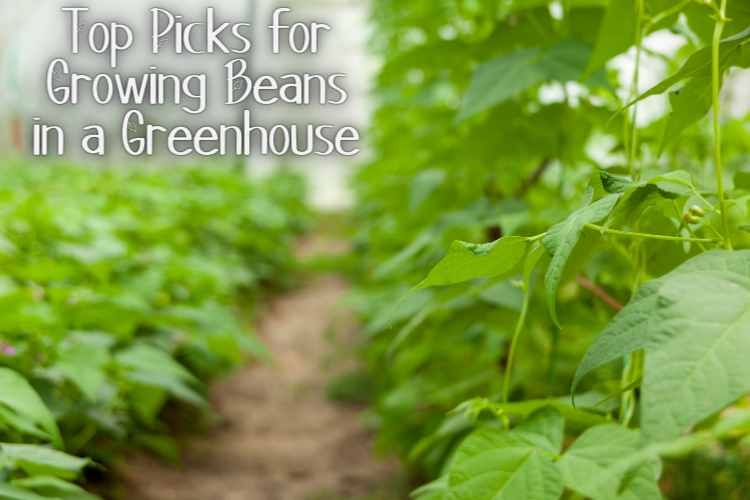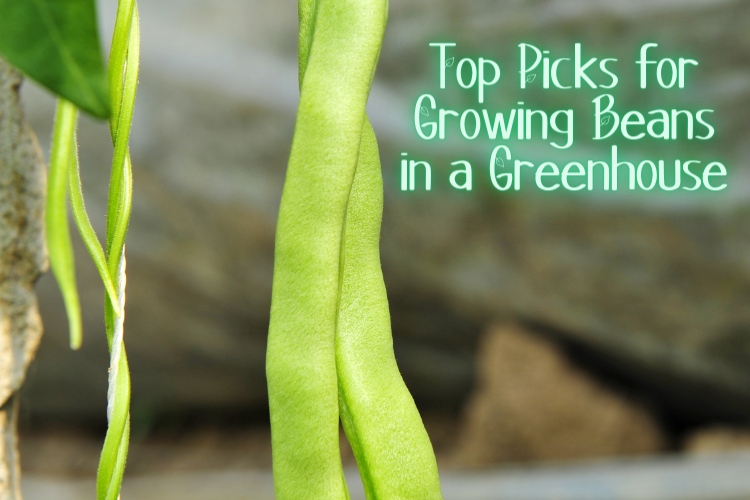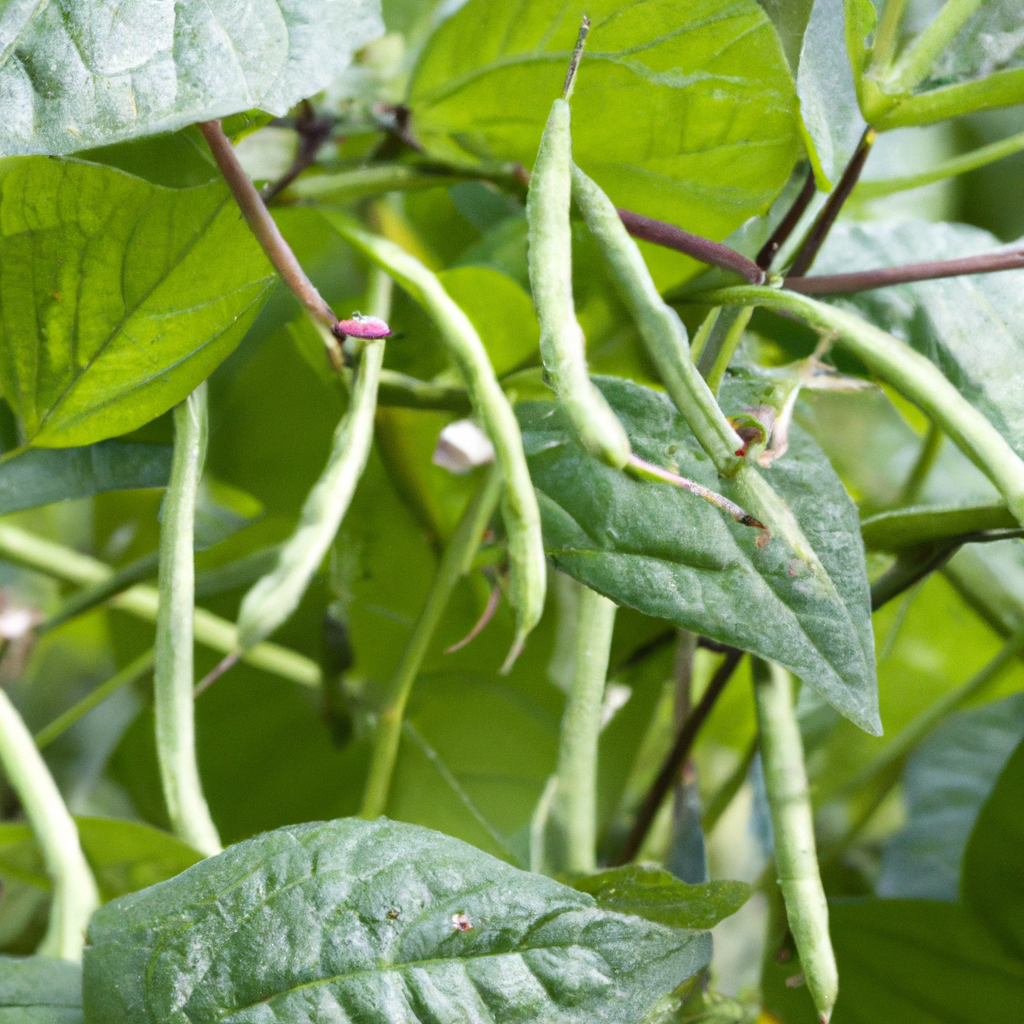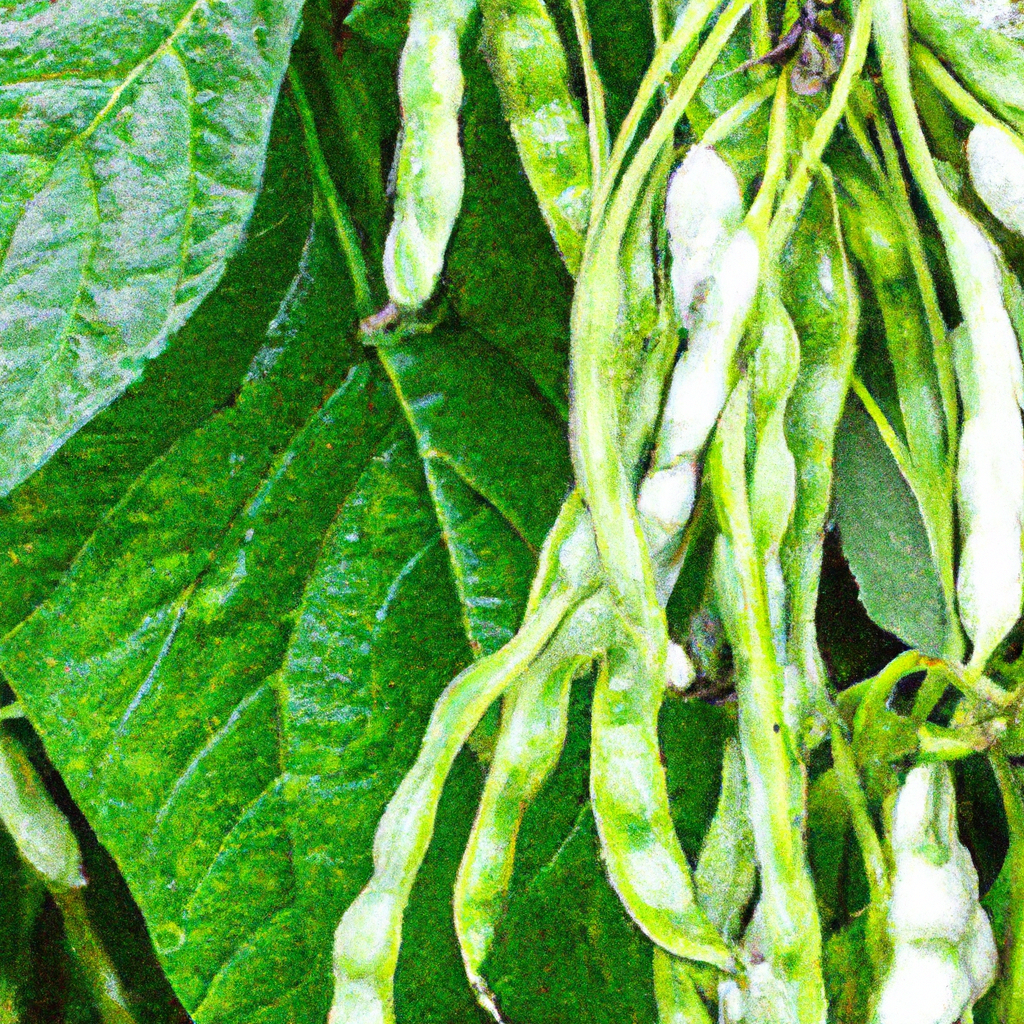
If you’re a gardening enthusiast looking to cultivate beans in the comfort of your own greenhouse, you’re in luck! In this article, we’ll explore the top picks for growing beans in a greenhouse and discover the varieties that thrive in this controlled environment. From compact bush types to climbing vines with vibrant pods, there’s a bean variety out there that will suit your specific greenhouse conditions and culinary needs. So let’s uncover the best greenhouse beans to grow and get ready to enjoy a bountiful harvest!
Choosing the Right Variety
Consider Climbing or Bush Varieties
When choosing the right variety of beans to grow in your greenhouse, you’ll want to consider whether you prefer climbing or bush varieties. Climbing beans, also known as pole beans, require some sort of support system such as trellises or netting to climb on. This can help maximize space utilization in your greenhouse by allowing the beans to grow vertically. On the other hand, bush varieties, as the name suggests, grow in a more compact and bushy manner, making them suitable for smaller greenhouse spaces.
Look for Compact Varieties for Limited Space
If you have limited space in your greenhouse, it’s essential to choose bean varieties that are compact in size. Look for dwarf or compact varieties that are specifically bred to grow well in containers and smaller spaces. These varieties typically have shorter vines and produce a good yield despite their smaller stature. By selecting compact varieties, you can make the most of your greenhouse space without sacrificing the quantity or quality of your bean harvest.
Choose Disease-Resistant Varieties
To ensure the health and productivity of your bean plants, it’s wise to select disease-resistant varieties. Beans can be susceptible to various diseases, such as bacterial blights, powdery mildew, and mosaic virus. By choosing varieties that have been bred to resist these common diseases, you can minimize the risk of your plants getting infected and reduce the need for chemical treatments. Disease-resistant varieties are often labeled as such in seed catalogs, so be sure to look for these when making your selection.
Soil and Sun Requirements
Use Well-Draining Soil
Beans thrive in well-draining soil that allows excess water to flow away and prevents waterlogging. Before planting your beans in the greenhouse, it’s crucial to ensure that the soil has good drainage. You can achieve this by adding organic matter, such as compost or well-rotted manure, to improve the soil structure. Avoid heavy clay soils, as they tend to retain water and can lead to root rot. Regularly check the moisture levels in the soil to ensure it remains adequately drained throughout the growing season.
Ensure Sufficient Sunlight
Beans are sun-loving plants that require at least 6-8 hours of direct sunlight daily. When positioning your greenhouse, choose a location that receives ample sunlight throughout the day. This will optimize the photosynthesis process and promote healthy growth and fruiting in your bean plants. If your greenhouse is in a shady area, consider using supplemental grow lights to provide the necessary light intensity. Having enough sunlight is crucial for bean plants to produce a bountiful harvest.
Maintain Optimal Temperature
Beans are warm-season crops that thrive in temperatures between 70°F and 80°F (21°C and 27°C). To ensure optimal growth and productivity in your greenhouse, it’s essential to maintain a consistent temperature within this range. Monitor the temperature regularly and make adjustments as needed using ventilation, shade cloth, or heating systems, depending on the climate you live in. Avoid exposing your bean plants to extreme temperature fluctuations, as this can stress them and negatively impact their overall performance.

Starting Seeds Indoors
Germinate Seeds in Seed Trays
To get a head start on the growing season, it’s recommended to start bean seeds indoors in seed trays. Fill the trays with a high-quality seed starting mix, moisten it, and then plant the seeds according to the packet instructions. Keep the trays in a warm and well-lit area, such as on a windowsill or under grow lights. Within 7-10 days, you should start to see the seeds germinate and sprout.
Transplant Seedlings to Individual Pots
Once the seedlings have developed true leaves and are about 3-4 inches tall, they are ready to be transplanted into individual pots. Use pots that are at least 4-6 inches deep to allow for sufficient root growth. Gently remove the seedlings from the trays, taking care not to damage the roots, and plant them at the same depth they were growing in the trays. Place the pots back in the warm and well-lit area, and continue to water and care for them until they are ready for transplanting in the greenhouse.
Harden Off Seedlings before Transplanting
Before transplanting your seedlings into the greenhouse, it’s essential to harden them off gradually. Hardening off is the process of acclimating the young plants to outdoor conditions, such as sunlight, wind, and temperature fluctuations. Start by placing the seedlings outdoors in a sheltered and partially shaded area for a few hours each day, gradually increasing the duration and exposure over the course of a week. This process helps toughen up the plants and prepares them for the harsher conditions they will face when transplanted into the greenhouse.
Transplanting into the Greenhouse
Prepare the Greenhouse Bed
Before transplanting your seedlings, prepare the greenhouse bed by ensuring it is free from weeds and debris. Loosen the soil gently with a garden fork or tiller, taking care not to damage any existing plants or roots. If necessary, incorporate organic matter, such as compost or aged manure, into the soil to improve its fertility and structure. Smooth the soil’s surface and create planting rows or mounds, depending on the bean variety you are growing.
Transplant Seedlings at the Right Time
Transplant your hardened off seedlings into the greenhouse when the soil temperature reaches a consistent 60°F (15.5°C) or above. This is the optimal temperature for bean root growth and ensures that the plants will establish themselves well in the greenhouse. Place the seedlings into the prepared beds, spacing them according to the recommended distance for the particular variety you are growing. This will allow each plant to have sufficient space for proper air circulation and prevent overcrowding.
Provide Support for Climbing Varieties
If you are growing climbing varieties of beans, it’s important to provide them with adequate support in the greenhouse. Install trellises, netting, or sturdy stakes for the vines to climb on. As the plants grow, gently guide the tendrils or stems around the support structure and secure them if needed. This not only helps prevent the plants from sprawling on the ground but also makes harvesting easier by keeping the bean pods off the soil and away from potential rot or pests.

Watering and Fertilizing
Water Consistently but Avoid Overwatering
Proper watering is crucial for healthy bean plants in the greenhouse. Provide consistent moisture to the plants by watering them regularly, especially during dry spells or hot weather. However, make sure not to overwater, as excessive moisture can lead to root rot and other diseases. Allow the soil to slightly dry out between waterings to prevent waterlogging. Always water at the base of the plants, aiming for the soil rather than the foliage, to minimize the risk of foliar diseases.
Use Organic Fertilizers for Better Results
Beans are known as nitrogen-fixing plants, which means they have the ability to convert atmospheric nitrogen into a usable form for themselves and other plants. However, providing supplemental fertilization can still benefit their growth and productivity. Use organic fertilizers, such as compost or well-rotted manure, to provide a slow-release source of nutrients to the plants. Apply the fertilizer according to the manufacturer’s instructions or based on a soil test to ensure you are providing the necessary nutrients without overfeeding the plants.
Monitor Soil Moisture Levels
Regularly monitor the moisture levels in the soil to ensure optimal growing conditions for your beans. Stick your finger about an inch into the soil and check if it feels dry or moist. Water when the soil is dry to the touch but not completely parched. Conversely, if the soil feels consistently wet, it may indicate overwatering, and you should adjust your watering practices accordingly. Maintaining proper soil moisture levels is vital for bean plants to thrive and produce a bountiful harvest.
Pests and Diseases
Keep an Eye out for Aphids and Spider Mites
Aphids and spider mites are common pests that can cause damage to your bean plants in the greenhouse. These tiny insects suck the sap from the leaves, which can lead to stunted growth and yellowing foliage. Monitor your plants regularly for any signs of infestation, such as curled leaves, sticky residue, or the presence of the pests themselves. If you spot aphids or spider mites, try washing them off with a strong spray of water or use insecticidal soap or neem oil to control their population.
Prevent Diseases with Proper Ventilation
Good ventilation is essential in controlling and preventing diseases in the greenhouse. Poor air circulation and high humidity can create an environment that is conducive to fungal diseases, such as powdery mildew or bacterial blights. Ensure that your greenhouse has proper ventilation, including vents, fans, or doors that can be opened to allow for air movement. This will help reduce humidity levels and prevent the buildup of moisture on the leaves, thus minimizing the risk of disease development.
Use Natural Pest Control Methods
When it comes to pest control in your greenhouse, it’s always best to opt for natural and organic methods first. Introduce beneficial insects, such as ladybugs or lacewings, which feed on aphids and other pests. You can also use physical barriers, such as row covers or netting, to protect your plants from insect infestations. Additionally, practicing crop rotation and maintaining a clean greenhouse environment can help reduce the risk of pests and diseases. For more severe infestations, consult with local gardening experts or consider using organic-approved pesticides as a last resort.

Training and Pruning
Train Climbing Beans to Climb Trellises or Netting
If you have chosen climbing varieties of beans, it’s important to train them to climb the trellises or netting in the greenhouse. As the plants grow, gently guide the vine tendrils or stems around the support structure to encourage upward growth. This helps prevent the plants from sprawling on the ground and allows for better air circulation and light penetration, which can reduce the risk of diseases such as botrytis or gray mold. Regularly check for any tendrils that may have gone astray and gently redirect them back onto the support.
Pinch off Excess Growth to Promote Bushiness
To promote bushiness and fuller growth in bush bean varieties, consider pinching off the tips of the plants when they reach about 6-8 inches in height. This encourages the development of lateral branches and more abundant foliage, leading to a higher yield of beans. Use your fingers or clean pruning shears to pinch or cut off the growing tip, just above a pair of leaves. Be careful not to damage the main stem or remove too much growth, as this can hinder the overall growth of the plant.
Remove Yellowing or Diseased Leaves
Regularly inspect your bean plants in the greenhouse and remove any yellowing or diseased leaves. Yellowing leaves may indicate a nutrient deficiency or a pest or disease issue. By promptly removing the affected leaves, you can prevent the spread of the problem to healthy parts of the plant and allow the plant to focus its energy on fruit production. Use clean pruning shears or simply pinch off the yellowed or diseased leaves at their base and dispose of them properly.
Harvesting and Storage
Harvest Beans when Pods are Firm and Brightly Colored
When it comes to harvesting beans, timing is crucial for optimal flavor and tenderness. Regularly check your bean plants for mature pods, which are usually firm, brightly colored, and crisp. Snap off the pods from the plant using your fingers, taking care not to damage the vines or nearby foliage. Harvesting beans regularly when they are at their peak ensures a continuous harvest throughout the growing season and promotes greater productivity from the plants.
Store Beans in the Refrigerator for Freshness
To maintain the freshness and quality of harvested beans, it’s best to store them in the refrigerator. Place the harvested beans in a perforated plastic bag or airtight container to prevent moisture loss and refrigerate them at a temperature of around 40°F (4°C). Stored properly, fresh beans can last for up to one week in the refrigerator, giving you ample time to enjoy them in various recipes or share them with friends and family.
Consider Freezing or Canning for Long-Term Storage
If you have a surplus of beans or want to enjoy them all year round, consider preserving them through freezing or canning. Both methods can extend the lifespan of your beans, allowing you to enjoy their flavors and nutritional benefits even during the offseason. To freeze beans, blanch them briefly in boiling water, shock them in ice water, and then pack them in freezer-safe containers or bags. Canning involves using a pressure canner or water bath canner to process the beans in jars with the appropriate canning liquid. Follow proper guidelines and procedures to ensure safe and effective preservation of your beans.

Common Growing Issues
Yellowing Leaves indicate Nutrient Deficiencies
If you notice yellowing leaves on your bean plants in the greenhouse, it may indicate nutrient deficiencies. Nitrogen deficiency often manifests as yellowing leaves starting from the oldest ones at the bottom of the plant, while magnesium or iron deficiency may cause interveinal yellowing or yellow patches on the leaves. In such cases, supplementing the plants with a balanced organic fertilizer or applying nutrient-specific amendments can help correct the deficiencies and restore healthy leaf coloration.
Leaves Curling or Damaged by Pests
When the leaves of your bean plants start curling or show signs of damage, it could be a sign of pest infestations. Aphids, spider mites, or other sucking insects can cause leaf curling and distortions. Additionally, leaf-eating pests like caterpillars or beetles may also cause visible damage. Inspect your plants closely and take appropriate measures to control the pests, such as using organic insecticides or physical methods like handpicking. Early identification and intervention can help minimize the damage and maintain plant health.
Stunted Growth due to Lack of Sunlight
If your bean plants are experiencing stunted growth, it could be due to insufficient sunlight. Beans require a minimum of 6-8 hours of direct sunlight daily for optimal growth and productivity. If your greenhouse is located in a shaded area or has limited exposure to sunlight, consider using supplemental grow lights to provide the necessary light intensity. Position the lights at an appropriate distance and duration to replicate natural sunlight and promote healthy growth in your bean plants.
Conclusion
Growing beans in a greenhouse can be a rewarding and enjoyable experience. By choosing the right variety, providing optimal soil and sun conditions, starting seeds indoors, transplanting carefully, watering and fertilizing appropriately, and managing pests and diseases, you can cultivate healthy and productive bean plants. Remember to train and prune your plants, harvest beans at the right time, and store them properly to maximize the yield and enjoy fresh and nutritious beans all year round. Don’t be afraid to experiment with different varieties and growing techniques, and always maintain a healthy greenhouse environment to ensure successful bean cultivation.


